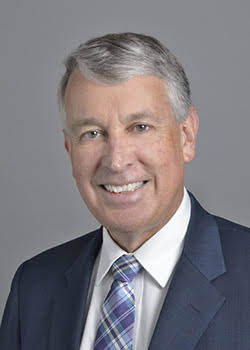
Here in Nevada the health care system seems to be caught in the 1980s. Fee-for-service rules much of the payment system. There are few medical practices owned by hospitals; and care coordination is haphazard at best. While much of the country moves into health care reform initiatives, such advanced payment models — patient-centered medical homes and accountable care organizations — Nevada seems immune to it all. And this lack of reform shows up in all objective measures of health care quality. Medicare compares hospitals nationwide and rates them anywhere from one to five stars. Many of the largest Nevada hospitals rate one star, while a small number rate higher. Our doctor-to-patient ratio is near the lowest in the country and care coordination among providers is almost nonexistent. At your last doctor’s visit, did they say they have all your medical records from your recent hospital stay? Probably not.
But there are glimmers of hope and improvement. Hospitals are starting to focus on quality. Almost all hospitals are working on reducing their avoidable patient readmissions after a hospital stay. They all want to improve their star ratings and patient satisfaction scores. UNLV recently started its medical school, which should bear fruit in a few years. Training medical students and residents is a well-established method to keep doctors local. Most medical residents end up practicing close to where they completed their residency. And, there already exist tools for improving care coordination.
This is where my organization, HealtHIE Nevada, the state’s Health Information Exchange (HIE) comes in. One of our primary goals is to provide the right data, to the right provider at the right time to reform the health care delivery system. In other words, care coordination. We complement the services of hospitals and providers by providing a patient-centric solution that allows providers to view the medical records of patients across the continuum of care. With a patient’s consent, doctors at hospitals, emergency departments, nursing homes or provider offices can look up medical records from any participating organization. HealtHIE Nevada can immediately alert doctors when their patient is in the emergency room or admitted to the hospital.
HealtHIE Nevada does this by securely collecting clinical data from providers’ EHRs, aggregating the data, indexing it and cataloging it by type. That data includes patient events, such as emergency department or hospital admissions, doctor’s notes, laboratory results, radiology reports, medications, medical images and care summaries. It then makes this data available to treating providers, payers, public health and others based on state and federal laws or with patient consent. The treating provider either uses the HIE portal called HealtHIE Chart or his EHR, which can query the HIE directly. In this way, an HIE provides a secure statewide network of a patient’s clinical data, saving time and money while proving the best care possible. Now I call that care coordination.
Michael L. Gagnon, CPHIMS is executive director of HealtHIE Nevada and has more than 35 years of experience in information technology, including 25 in health information technology. For more information on HealtHIE Nevada, visit www.healthienevada.org.







